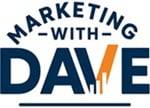A Marketer’s Mount Rushmore: The Greatest Minds in Marketing History
Mount Rushmore, a monumental human creation carved into the Black Hills of South Dakota, stands as a powerful symbol of American history. Few would argue against the four U.S. Presidents who grace its face. 1. George Washington George Washington was the first President of the United States who led the American Revolution to victory. 2. Thomas Jefferson Thomas Jefferson was the third President of the United States and author of the Declaration of Independence. 3. Theodore Roosevelt Theodore Roosevelt was the 26th President of the United States and known for his role in negotiating the construction of the Panama Canal.
